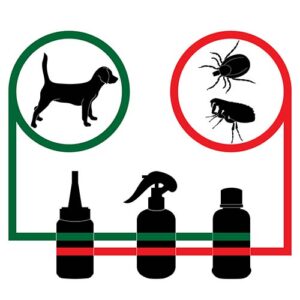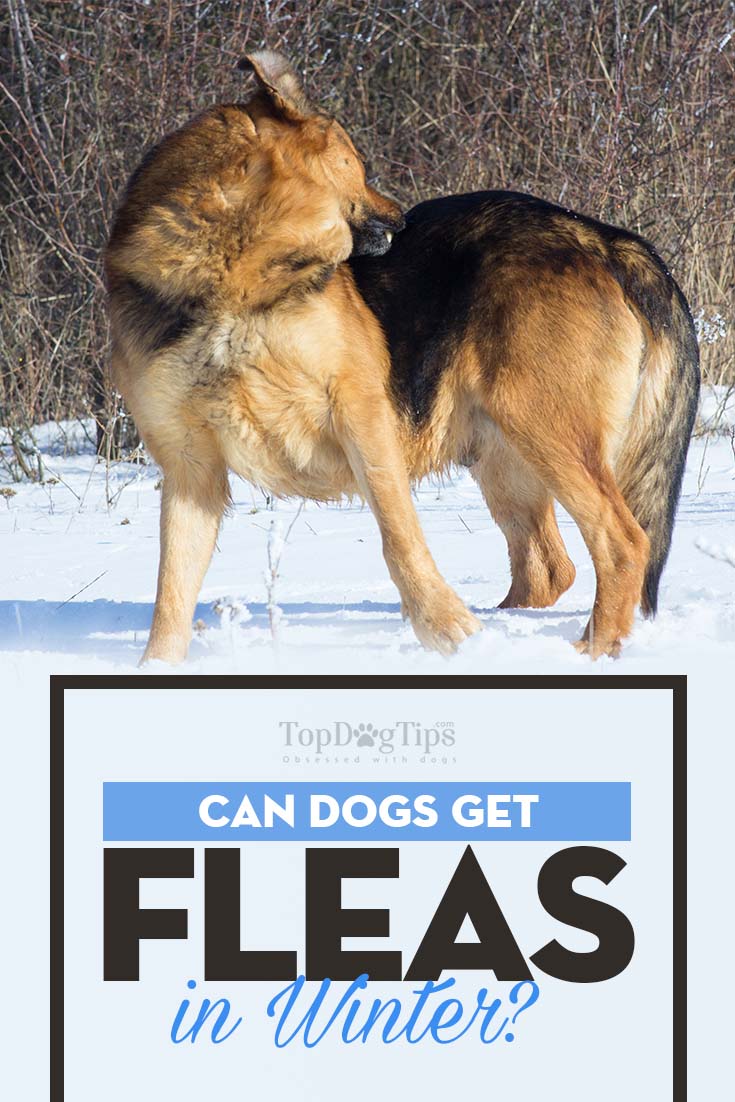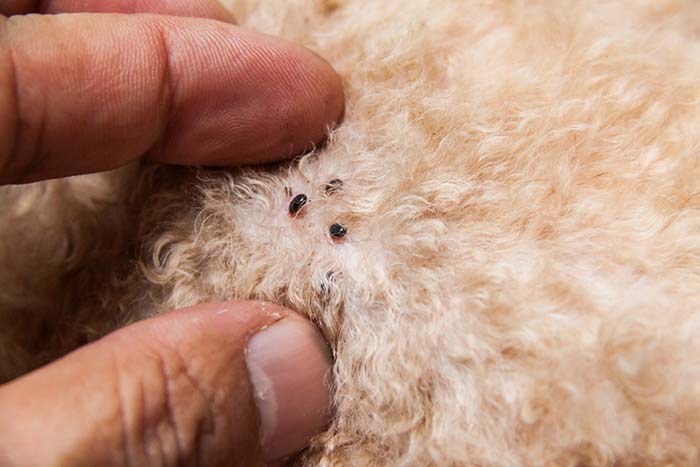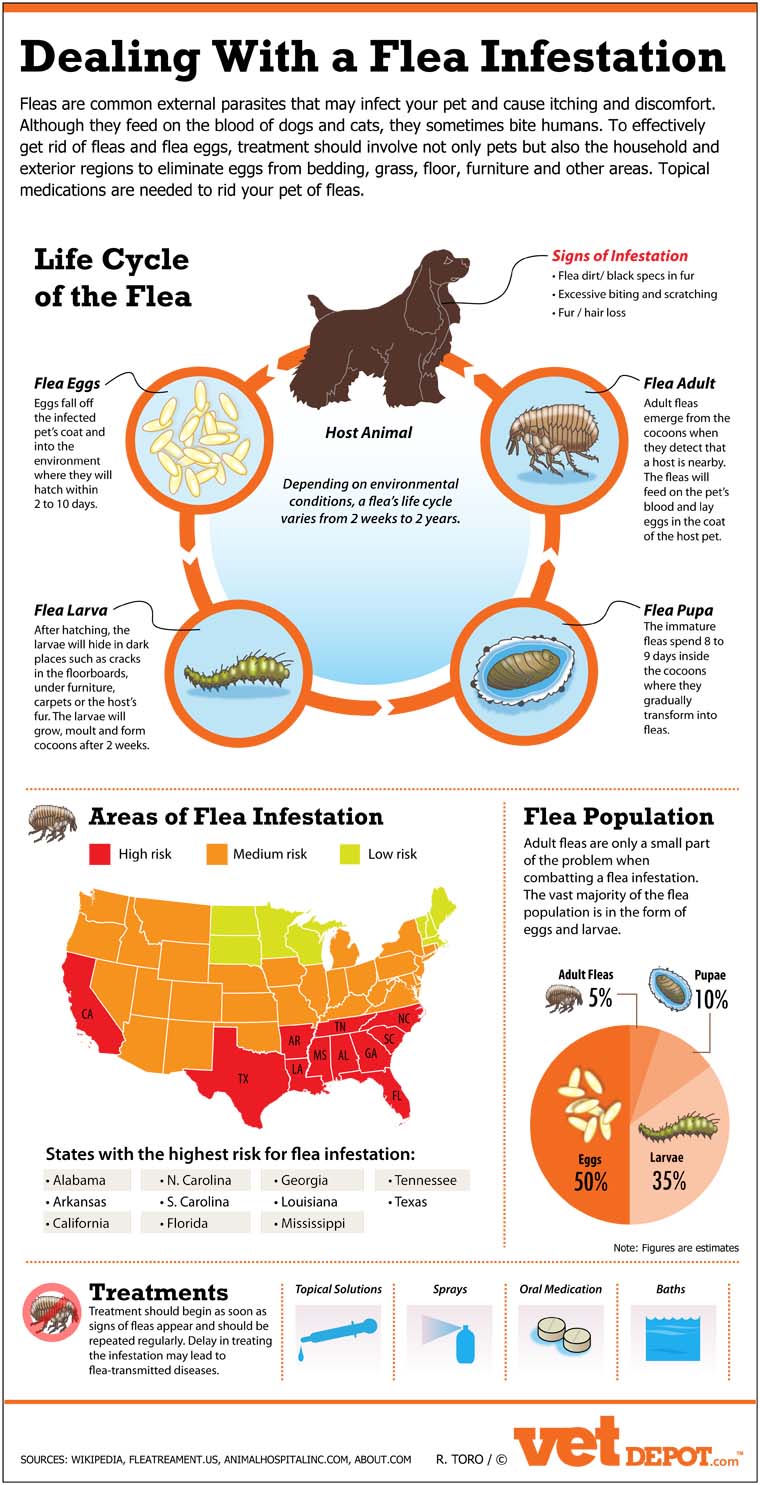Parasites are annoying, and fleas are one of the main suspects pet owners have to deal with. Summer is usually when we are all up in arms to fight off fleas, but can dogs get fleas in the winter too? The short answer is yes – dogs can get fleas in winter if those fleas find your dog.
The longer answer goes something like this: for the most part, fleas thrive in a high humidity, warm temperature environment. For this reason, fleas are most commonly found in southern and coastal states and are most active during the summer months.
Hot and humid weather is when every pet owner will encounter fleas (and ticks) most often, but can dogs get fleas in the winter and how exactly does that happen?
WATCH THE VIDEO: How to Remove Fleas From A Dog (step by step guide)
Can Dogs Get Fleas In the Winter?
How come dogs get fleas in the winter? To answer that, we first we need to understand how fleas live and thrive. There are four distinct life-cycle stages that a flea goes through: egg, larvae, pupae, and adult. Flea’s eggs are commonly laid on a dog’s skin, where the dog acts as a host. These eggs will often times fall off of the pet, onto the carpet, furniture, and bedding.
During the larval cycle, fleas avoid strong light. They move into carpet fibers, into grass, dirt, leaves, under furniture, or anywhere else dark. Larvae prefer moist, dark, warm environments. Once the flea is an adult, they are attracted to light. Usually, adult fleas live up to 3 weeks and lay around 500 eggs. In famine conditions, the flea will adapt and is able to live on one blood meal a month for up to two months.
Fleas are usually not capable of surviving in temperatures below 30.2 F degrees for more than 5 days in a row, according to Michael Dryden, professor of Veterinary Parasitology, Kansas State University. Fleas find ways to survive this, usually by attaching themselves to your dog, which acts as a warm-bodied host.
How do fleas survive in winter then?
Since dogs are more likely to be inside during the winter, fleas are more likely to come inside as well. Once the fleas are inside, they are able to survive indefinitely, as long as they have a host to feed off of. Most of us keep our homes warm during the winter, which provides fleas a nice warm place to live too. Inside fleas will not die unless they are treated. When fleas make their way inside your home, both your pet and home environment should be treated with flea carpet sprays and flea bombs or other methods such as electric flea traps.
For the environment, there are plenty of storebought remedies available, along with home flea remedies, such as borax. There is commercial flea treatments available for your dogs as well. There is treatment available for infestations, and preventative treatment available. The most common solutions to treat dog fleas in winter are:
- Flea Pills for Dogs

- Flea Drops for Dogs
- Flea Shampoos for Dogs
- Flea Collars for Dogs
- Flea Powders for Dogs
The most important aspect of flea treatment and prevention is consistency. There should be multiple methods used, and they should all be used multiple times, even after you think the infestation is gone. Flea eggs can take weeks to hatch, which means even after treatment you may have another problem in the future. Once those eggs hatch, the life cycle once again begins which can lead to further infestations.
Regular, preventative treatment will prevent another flea infestation from happening once the eggs hatch. For this reason, flea treatment should be implemented throughout the year. We've previously tested and compared many different flea treatments for dogs (watch the video review here) to find the most effective remedies, which include:
Spot-on flea treatments. Spot-on flea treatments are applied directly to your pet. It is a liquid, applied to the scruff of your dog’s neck, directly onto the skin. The dog’s hair should be parted. The adulticides in most spot-on flea treatments are designed to eliminate the fleas from your dog within 24 hours of application.
Oral flea treatments. Oral flea treatments are administered by the mouth and kill all adult fleas on your dog. They're better known as dog flea pills and are one of the most effective solutions out there.
Insect growth regulators. Oral insect growth regulators circulate in an animal’s bloodstream. When a flea bites your dog with the regulator, it is ingested by the flea and gets passed onto the eggs, which makes them unable to hatch. This product is available for dogs in tablet form and is given with food once a month.
Integrated flea control. This type of flea control uses two forms of insecticide to target the different stages of the flea. The adulticide in the product kills the adult fleas you see on your dog, and the insect growth regulator to handle the eggs left around the house. This is one of the most effective methods.
ALSO READ: The 50 Best Flea Treatments for Dogs (as chosen by pet owners)
Treating home for fleas in winter
If you regularly treat your dog for fleas with these treatments, you shouldn’t have a problem with fleas in your house either in winter or summer. Fleas will jump on your dog as part of their life cycle, so the treatment will kill them. It is still recommended to treat your home as a preventative measure.
 If you had fleas throughout the winter, there are steps you must take once the weather becomes warm again. The goal should be to eliminate fleas from both your home and your pet during the winter. Then, once it becomes warm again, you only have to treat the outdoors as a preventative measure.
If you had fleas throughout the winter, there are steps you must take once the weather becomes warm again. The goal should be to eliminate fleas from both your home and your pet during the winter. Then, once it becomes warm again, you only have to treat the outdoors as a preventative measure.
As soon as it becomes spring, spray your entire outdoor area with a flea treatment solution. Continue to do this regularly, around every 30 days or so. This will help prevent another flea infestation from taking place. Fleas always originate outside, so this will help solve the problem at the source.
So to answer the question, can dogs get fleas in the winter – yes, they absolutely can. Your dog and home provide warmth for them to flourish. Regular flea prevention and immediate treatment is the best way to keep your home, your dog, and yourself flea-free. When treating your dog, it is important to continue regular treatment, even if you believe the infestation is gone. All areas of your home, including outside areas, should be treated regularly as well. Flea eggs are hard to notice, and once they hatch, the infestation starts all over again.
READ NEXT: How to Make Homemade Flea Spray for Dogs (3 Recipes)















